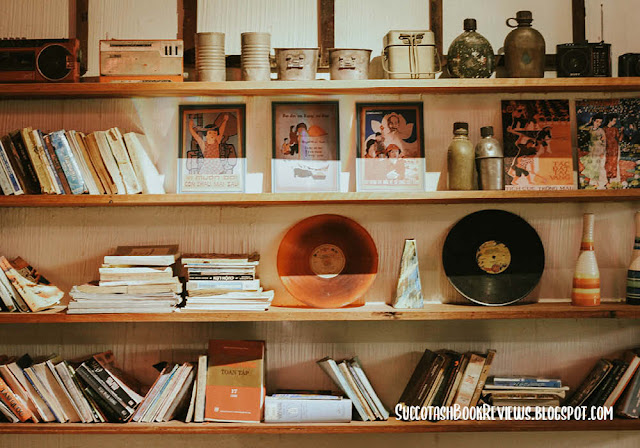For Cod and Country: Simple Delicious Sustainable Cooking
Barton Seaver in his book, For Cod and Country, cooks up delicious, sustainable food by promoting smaller fish portions and healthy amounts of vegetables.
Barton Seaver practices what he talks about with fish sustainability and cooking: he's a National Geographic fellow increasing awareness to ocean issues and is a practicing chef. His dedication to both industries has made For Cod and Country more than a cookbook. It provides tips for sustainability through portion size, using fish that are seasonally caught, and encourages the use of fresh produce.
Seaver uses the term 'eat low on the food chain.' Smaller fish are lest costly to purchase and are able to replenish themselves at a faster rate than larger predatory species. If there is a fish species you especially enjoy that is on a seafood watch list, he gives several seafood substitutions. For example, instead of Chilean sea bass, try sablefish, Pacific halibut, a farm-raised sturgeon instead. Another reason to steer away from larger fish is the levels of mercury and other toxins are considerably higher in larger fish. As the food chain travels up, so does the amount of toxins that are absorbed in the fish.
Descriptions of many sustainable fish and seafood species are listed. Seaver gives information on where they are found, why they are good choices, and tips for cooking them. There are numerous color pictures throughout the book. Techniques are sprinkled through the different sections such as cutting raw fish, shucking oysters, and shopping for fish.
Ingredients:
Disclosure: This book was provided by the publisher and any opinions are my own.
Barton Seaver practices what he talks about with fish sustainability and cooking: he's a National Geographic fellow increasing awareness to ocean issues and is a practicing chef. His dedication to both industries has made For Cod and Country more than a cookbook. It provides tips for sustainability through portion size, using fish that are seasonally caught, and encourages the use of fresh produce.
Seaver uses the term 'eat low on the food chain.' Smaller fish are lest costly to purchase and are able to replenish themselves at a faster rate than larger predatory species. If there is a fish species you especially enjoy that is on a seafood watch list, he gives several seafood substitutions. For example, instead of Chilean sea bass, try sablefish, Pacific halibut, a farm-raised sturgeon instead. Another reason to steer away from larger fish is the levels of mercury and other toxins are considerably higher in larger fish. As the food chain travels up, so does the amount of toxins that are absorbed in the fish.
Descriptions of many sustainable fish and seafood species are listed. Seaver gives information on where they are found, why they are good choices, and tips for cooking them. There are numerous color pictures throughout the book. Techniques are sprinkled through the different sections such as cutting raw fish, shucking oysters, and shopping for fish.
For Cod and Country Cookbook Chapters and Overview
The recipes are separated by season: Spring, Summer, Autumn, Winter, and A Separate Season. Each chapter features fish caught in those seasons, and the fifth season incorporates farm-raised fish and seafood. The Techniques section has useful information on different cooking methods and brining fish. For those interested in smoking fish, Seaver goes in depth on both methods: cold and hot smoking. There are three fish brining recipes for hot smoking as well as three rub recipes for cold smoking.Recommended For People Interested In Basic Fish Cookery and Sustainability
If there is one topic that is highlighted throughout For Cod and Country, that is to choose fish lower on the food chain and eat it in smaller portions. Categorizing the recipes by seasons helps to illustrate that fisheries also have seasons. All recipes are either photographed in the finished stage or show you how to do it. Seaver's descriptions of the different catch methods is valuable to those who are interested in responsible fishing, and teaches which methods are best at reducing bycatch, anything not targeted by fishermen.Recipe: Mahi Mahi with Grilled Peaches and Buttermilk-Mint Dressing
Serves 4Ingredients:
- 1 tablespoon extra-virgin olive oil
- 1 teaspoon Dijon mustard
- 1 teaspoon sugar
- 1/2 cup low-fat buttermilk
- Juice of 1/2 lemon
- Leaves from 8 sprigs fresh mint, chopped
- Salt
- Four 5-ounce portions mahi mahi fillet
- 4 ripe peaches, cut in half and pitted
- 1 pound arugula leaves
- 1 small red onion, very thinly sliced
- For the dressing, whisk together the olive oil, mustard, sugar, buttermilk, lemon juice, and mint. Season to taste with salt and allow to sit at room temperature for at least 20 minutes and up to two hours so that the flavors combine.
- For the mahi mahi, preheat a grill using charcoal or gas heat. Place the fillets on the coolest part of the grill and the peach halves over the hot part of the fire. Cover the grill and cook about 15-20 minutes for fillets 1 1/2 inches thick. The fish should be cooked through but only just beginning to flake when gentle pressure is applied. At that point, the peaches will be slightly charred and beginning to soften.
- To serve, mix the arugula and onion, toss with two-thirds of the dressing, and season with salt. Divide the salad among 4 plates. Place 2 grilled peach halves next to the salad. Place a piece of mahi mahi on top of the salad and spoon the remaining dressing over it. Serve immediately.
Book Information
- For Cod and Country: Simple Delicious Sustainable Cooking; by Barton Seaver
- Sterling Epicure, 2011
- ISBN13: 9781402777752
- Hardcover with Jacket, 304 pages
- Full Color - over 200 photos
Disclosure: This book was provided by the publisher and any opinions are my own.



Comments
Post a Comment
Thank you for you input!